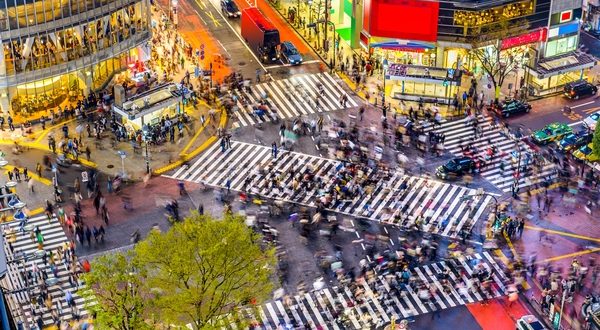[ad_1]
My first visit to Japan was interesting, to say the least. Things I didn’t even think of pre-travel (like making reservations—Tokyo is home to the most Michelin-starred restaurants in the world—in advance, carrying around reusable coffee/water bottles—it’s a very environmentally conscious country—and toilets that play music for your, um, comfort and privacy) threw me for a bit of a loop, in a good way.
Tokyo, the most populous metropolitan area with more than 37M inhabitants, is also the safest city in the world as of 2017 and one worth exploring once you’ve taken the time to learn some key words/phrases in Japanese (English is not spoken quite as much as you’d think).
Big tip: take public transportation whenever and wherever possible. Taxis can get expensive and besides, there are tons of restaurants, cafes, and shops to discover underground.
Because we tend to do touristy things when visiting new cities for the first time, I’ve compiled a list of what I really enjoyed in Tokyo instead of the usual tourist attractions. Not that temples, gardens, and palaces aren’t cool, but many of them are overcrowded to the point that it’s hard to walk, let alone breathe, at all hours. Who really wants to spend their vacation in long lines or with hoards of people taking vacay selfies anyway?
In Tokyo, I stayed at the Keio Plaza Hotel, centrally located and a nine-minute walk from Shinjuku Station. One of the nice things here is that there is a 7-Eleven (where you can get decent sushi and Japanese snacks like Pocky and Lotte Koala’s March cookies) across the street and it’s a quieter, tree-lined part of Shinjuku, away from the noise and city lights. Perks of this hotel: huge windows in rooms boast incredible city views, lots of dining options downstairs, L’Occitane products, and a lovely bathtub as well as comfy striped robes.
Skip Shibuya Crossing (you can see the busiest intersection in the world in passing) and spend some time getting to know what I thought was hands down the most charming—in a cool, weird way—area in Tokyo called Omoide Yokocho (translates to Memory Lane and is known to locals as Piss Alley). A narrow little alleyway filled with tiny restaurants and yakitori stalls, bright lights and post-WW2 bars, Memory Lane is home to Albatross, a three-story cozy bar that may fit 30 patrons, max. Sit on the second level, order drinks through a rickety trapdoor and get lost in Bob Dylan lyrics. It’s a bit smokey in there, but you’ll want to make friends and never leave.
Also in Shinjuku, Tajimaya Coffee House (a 50+ year old establishment) has a strict no pictures policy, so take it all in with some mental snapshots and a generous helping of taiyaki (a fish-shaped cake filled with sweet red bean paste). The traditional filter coffee here is on point as is the simple menu and unique, beautiful porcelain pieces used to serve your food. I gathered from my short trip that breakfast culture in Tokyo is more of a grab-and-go, as in locals eat their first meal of the day at home or in the office; many coffee shops, Tajimaya included, don’t open until 10 a.m. or later. Though it opens at 7 a.m., resist the urge to go to Starbucks. Save the familiar chain spots, if you must frequent them, for when you’re back in the U.S.
Instead of the Imperial Palace—I’d suggest a stroll through the gardens, if you happen to be in the area—head to Aman for a drink and views of Mount Fuji on a clear day. This urban luxury hotel isn’t cheap, but a beer will do. You’re here for the visual stimulation, after all. And boy will this view (and honestly, the architecture) stimulate you.
Instead of visiting Kinokuniya in Shinjuku (there’s one in L.A.’s Little Tokyo neighborhood and to be clear, I do love it), opt for something a little more original. I scope out bookstores in almost every city and Tsutaya in the fancy-schmancy Ginza Six mall is something else. This sixth-floor shop carries art as well as books and has a culture corner filled with art texts about everything from origami to kimono to swords.
Instead of Senso-ji Temple (the oldest Buddhist temple in the capital), go to Tsukiji Hongan-ji on your way to or from the famed Tsukiji (fish) Market. Rebuilt in ancient Indian style after a fire destroyed it in 1934, this temple is a bit quieter and feels more authentic than the tourist-ridden Senso-ji. You can enter and stay to experience a service, if you wish, but be sure to turn off your cameras/phones beforehand.
[ad_2]You can read more of the news on source
 Travelsmart
Travelsmart



